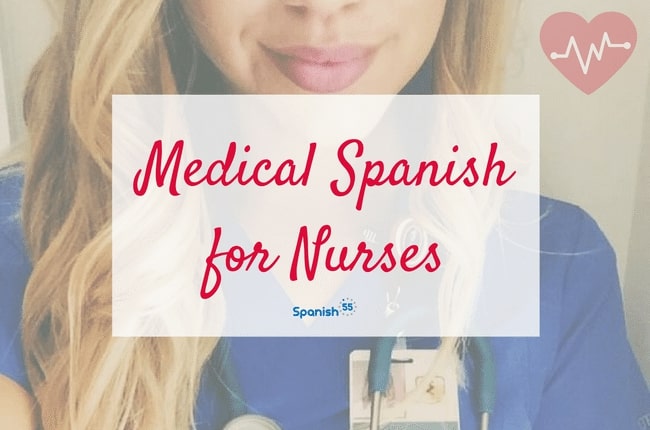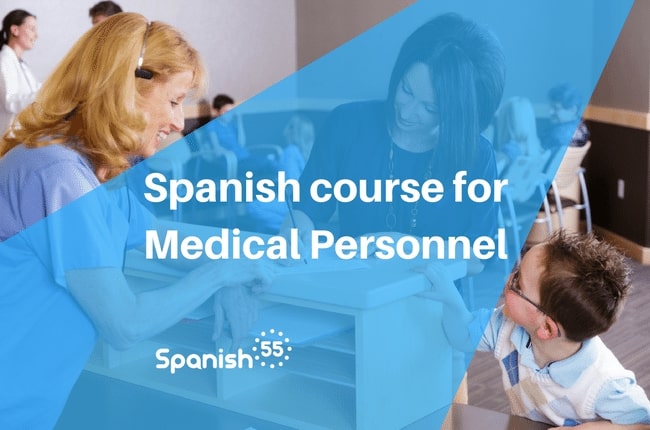A Vocabulary Guide in Spanish for Nursing Professionals

Image: Unsplash
Health professionals, particularly nurses, play a vital role in society by safeguarding the well-being of those they serve. Their expertise is globally recognized, underscoring the importance of effective communication. With a growing number of Spanish-speaking individuals seeking healthcare in English-speaking countries like the United States and the United Kingdom, proficiency in Spanish is increasingly essential for healthcare professionals to provide optimal care.
Moreover, opportunities abound for healthcare professionals to work or volunteer in Spanish-speaking regions, whether through NGOs or private companies. These experiences not only offer cultural enrichment but also bolster one's professional resume. For nurses contemplating such ventures, acquiring Spanish language skills tailored to their profession is paramount. Thus, there's no better time than now for nurses to begin expanding their vocabulary and language proficiency, especially with a focus on Spanish for nurses.
Spanish for Nurses: A Basic Vocabulary Guide
General nursing terminology
To effectively communicate in Spanish for nurses, it's crucial to grasp the essential words in the profession. Whether indicating a need to transport someone to the hospital or describing one's role or workplace, the following words are indispensable:
-
Nurse: The practitioner of nursing is referred to as "Enfermero" or "Enfermera" in Spanish.
-
Doctor or Physician: The medical professional is known as "Médico" or "Médica," with the masculine form often used for both genders. Alternatively, "Doctor" can be used, emphasizing the second syllable.
-
Patient: The individual utilizing healthcare services is termed "Paciente" in Spanish for nurses.
-
Hospital: The healthcare facility equipped with observation beds, hospital beds, and operating rooms is labeled as "Hospital" in Spanish, pronounced "ospeetál."
-
Clinic: A private facility where medical procedures and consultations occur, which may or may not include observation and hospitalization beds and operating rooms, is known as a "Clínica." Additionally, the symptoms and signs of a syndrome ("Síndrome") or the patient's health status ("Condición clínica") are referred to as "Clínica."
-
Health: In Spanish for nurses, "Salud" denotes what the WHO defines as the physical, psychological, and social balance of an individual.
-
Medicine: The career of doctors and medications themselves are referred to as "medicina" (medicamentos in the plural) in Spanish. It's a feminine word with no masculine equivalent.
-
Surgery: Surgical intervention is termed "cirugía" in Spanish, encompassing both the medical specialization of the "cirujano" (surgeon) and the surgical procedure itself. For instance, "The surgery went well" translates to "La cirugía fue exitosa."
-
Prescription: When a physician recommends medication, it's known as a "receta médica" in Spanish. The written order itself, typically on paper and signed, is also called a "receta" or "prescripción."
-
Diagnosis: The process of identifying a patient's illness is referred to as "diagnóstico" in Spanish.
-
Treatment: The implementation of a prescribed regimen is termed "tratamiento" in Spanish.
Symptoms and Patient Conditions

Image: Unsplash
“Dolor” (Pain) is often the primary reason for medical consultation, manifesting as discomfort or distress. Fever, defined as an elevation in body temperature above 38 degrees Celsius, is commonly referred to as "Fiebre" in Spanish. “Infección” (Infection) occurs when a pathogenic organism invades the body, leading to illness or disease. Nausea, expressed as "Náusea" in Spanish, refers to the sensation of wanting to vomit, known as "vomitar" in Spanish. Diarrhea, characterized by frequent bowel movements with semi-liquid or liquid stools, is known as "Diarrea" in Spanish. Conversely, constipation, indicated by infrequent or hard bowel movements, is termed "Estreñimiento" in Spanish. A wound, or "herida" in Spanish, refers to an injury to the skin or tissue. A fracture, known as "Fractura" in Spanish, describes a breakage or crack in a bone. Hemorrhage, characterized by excessive or profuse bleeding, is referred to as "Hemorragia" in Spanish.
Nursing equipment and procedures

Imagen: Unsplash
To gain a comprehensive understanding of Spanish for nurses, familiarity with the equipment and procedures is essential. When it comes to medication administration, whether intramuscular (intramuscular), subcutánea (subcutaneous), intradérmica (intradermal), or intravenosa (intravenous), all these fall under the umbrella term "inyección" (injection) in Spanish. This encompasses any method involving the use of a "jeringa" (syringe), except routes like transrectal or sublingual.
A "vacuna" is the term used for a vaccine, which serves to trigger an immune response and prevent infectious diseases. Dressing a wound involves using "vendajes" (bandages), while the act of closing the wound edges to expedite healing and prevent contamination is referred to as "sutura" (suturing).
When it comes to procedures like catheterization, "catéter" is the term used in Spanish. Similarly, the instrument used for auscultating cardiac, respiratory, fluid, and Korotkoff sounds is known as a "estetoscopio" (stethoscope). Monitoring blood pressure involves using an "esfigmomanómetro" (sphygmomanometer) or "tensiómetro", while the temperature is measured using a "termómetro".












